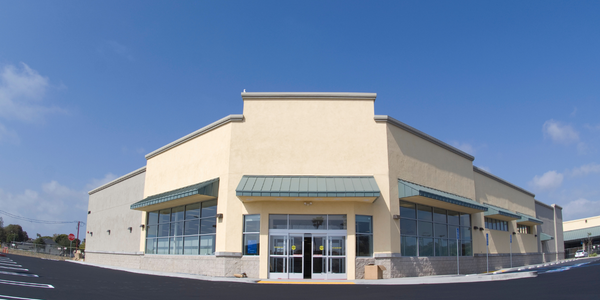公司规模
1,000+
地区
- Asia
国家
- Bangladesh
- India
- Sri Lanka
产品
- Wialon Local
- WiaTag
- Wialon Android App
- Wialon iOS App
技术栈
- NFC tags
- GPS tracking
实施规模
- Enterprise-wide Deployment
影响指标
- Cost Savings
- Employee Satisfaction
- Productivity Improvements
技术
- 网络与连接 - NFC
- 传感器 - 全球定位系统
适用行业
- 服装
适用功能
- 人力资源
- 物流运输
用例
- 人员跟踪与监控
- 车载远程信息处理
服务
- 系统集成
关于客户
The customer is one of the largest apparel manufacturers from Sri Lanka. They operate 14 factories located in Sri Lanka, Bangladesh, and India. The number of workers at each factory varies from 300 to 3,000. The employees live in the neighborhood and arrive at their work on special buses. The company was facing challenges in optimizing the planning system of production and transport departments due to the large number of employees and their scattered residences.
挑战
The client, a large apparel manufacturer from Sri Lanka, was facing issues with optimizing the planning system of production and transport departments. They needed to monitor employees across 14 factories located in Sri Lanka, Bangladesh, and India. The number of workers at each factory varied from 300 to 3,000, and the employees lived in the neighborhood and arrived at their work on special buses. The challenge was to develop a system that could accurately track the movement of these employees and provide real-time data to the production planning team.
解决方案
KLOUDIP, a partner of Gurtam, implemented a test solution at a plant with 300 workers. The solution involved the use of Wialon, WiaTag, NimBus, and NFC tags. WiaTag, a mobile workforce management app, was installed on mobile devices in buses or connected to specialized NFC-readers. Employees were given NFC tags which they scanned when boarding and getting off the bus. This data was sent to Wialon, providing the production planning team with passenger reports one hour before the working shift starts. This allowed the team to know the exact time and location where a particular worker boarded and got off the shuttle bus, and adjust the production plan accordingly. NimBus was used to count the total number of passengers for every bus, determine the most popular and crowded stopping points, and build the most efficient route.
运营影响
数量效益

Case Study missing?
Start adding your own!
Register with your work email and create a new case study profile for your business.
相关案例.

Case Study
Fire Alarm System and Remote Monitoring Sytem
Fire alarm systems are essential in providing an early warning in the event of fire. They help to save lives and protect property whilst also fulfilling the needs of insurance companies and government departments.Fire alarm systems typically consist of several inter-linked components, such as smoke detectors, heat detector, carbon monoxide, manual call points, sounders, alarm and buzzer. The fire alarm system should give immediate information in order to prevent the fire spread and protect live and property.To get maximum protection a shoe manufacturer in Indonesia opted for a new fire alarm system to monitor 13 production sites spread over 160 hectars. Although the company had an existing fire alarm system, it could not be monitored remotely.It was essential that the new system would be able to be monitored from a central control room. It needed to be able to connect to the existing smoke detector and manual call point. Information should be easily collected and passed on to the Supervisory Control and Data Acquisition (SCADA) system. Furthermore, the system should have several features such as alarm management, auto reporting, being connected to many client computers without additional cost, and run 24/7 without fails. The company also needed a system which could be implemented without changing the architecture of the existing fire alarm system.

Case Study
IoT Applications and Upgrades in Textile Plant
At any given time, the textile company’s manufacturing facility has up to 2,000 textile carts in use. These carts are pushed from room to room, carrying materials or semi-finished products. Previously, a paper with a hand-written description was attached to each cart. This traditional method of processing made product tracking extremely difficult. Additionally, making sure that every cart of materials or semi-finished products went to its correct processing work station was also a problem. Therefore, the company desired an intelligent solution for tracking assets at their factories. They also wanted a solution that would help them collect process data so they could improve their manufacturing efficiency.

Case Study
Retailer Uses RFID Scanner to Improve Efficiency
Patrizia Pepe wished to improve the logistics of their warehouse: accepting incoming goods from their production sites, movement of items throughout
the warehouse, and packaging of goods for distribution to the retail locations. They initially tried to use barcodes for this function. Because barcodes must be individually scanned within a line-of-sight, the acceptance of goods coming into the warehouse was too time consuming. Working with the University of Florence, Patrizia Pepe instituted a five-month pilot project beginning in August of 2009 to test the validity of an RFID solution. The pilot involved tagging of about 60,000 items for the second seasonal collection, and convinced the company to move forward with tagging all items.

Case Study
Monitoring and Controlling Automatic Mixing and Dispensing Machines
As technology advances, textile manufacturing has been transformed from a labor-intensive to a partially or fully automated industry. Automation is significant in all segments of textile production - from spinning to printing, and textile machinery manufacturers are constantly searching for new technologies and automation processes will increase the productivity of their machines. The color paste mixing and dispensing machine is an essential part of the printing and dyeing process. With the advantage of automatically computerized controls and database management, the system can significantly improve its dispensing precision, working efficiency and production quality as well as reducing material consumption.





